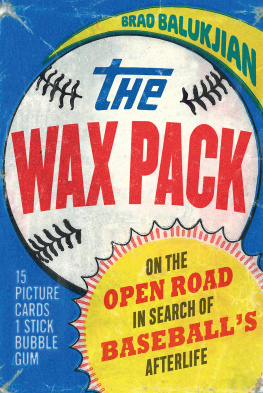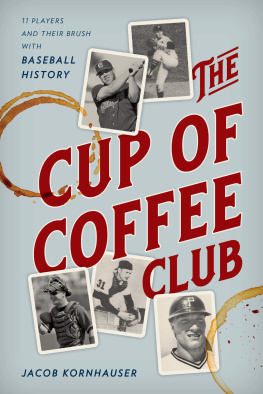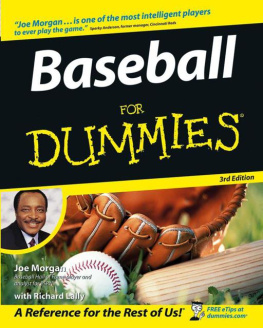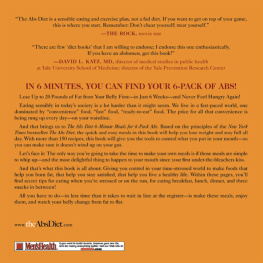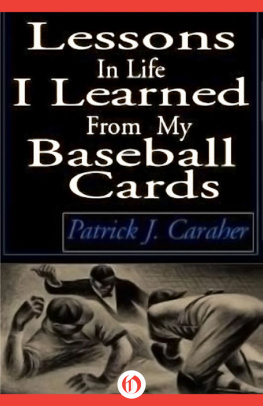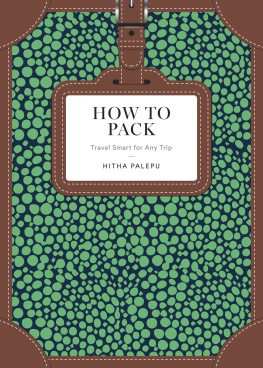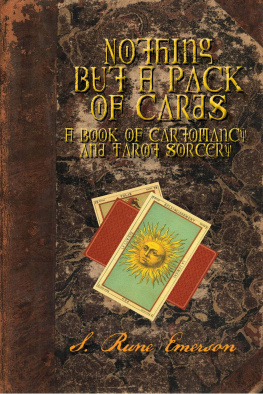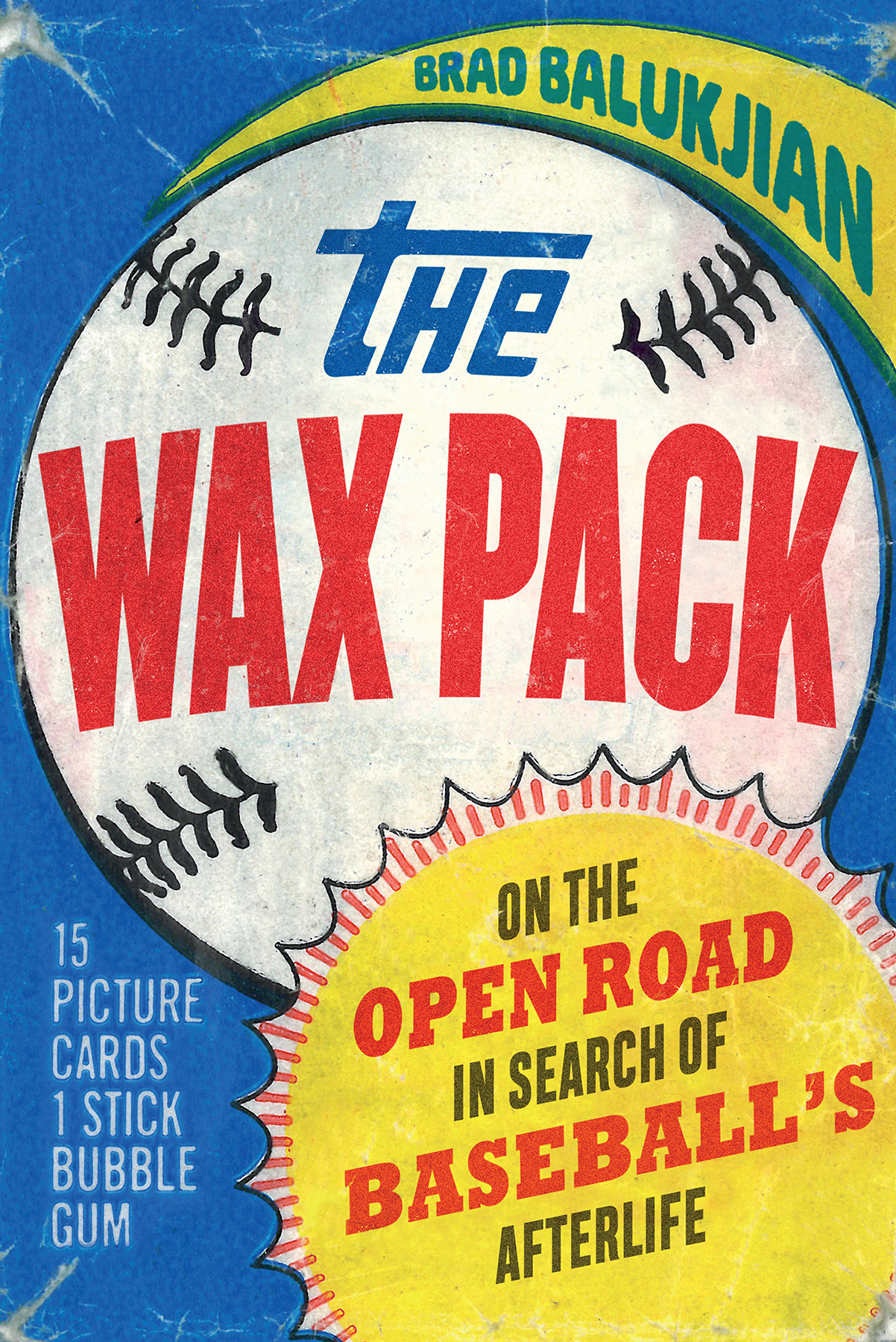
Poignant and powerful.... Balukjian covers more than ten thousand miles to track down the stories of fourteen men from a single pack of 1986 Topps baseball cards, learning a lot about their livesand his own. Hop in the backseat and join him for the journey.
Tyler Kepner, national baseball writer for the New York Times and best-selling author of K: A History of Baseball in Ten Pitches
As pleasing as the pink slab of bubble gum that, long ago, came with baseball cards inside five cent packets, this slender volume gives fresh flavor to the familiar phrase inside baseball.
George F. Will
What if a pack of baseball cards could come to life? It sounds like a Spielberg movie plot, except it happened. It happened because Brad Balukjian made it happen, in real life, with the most eclectic cast of baseball characters ever assembled. And the result is one of the most fun, honest, funny, human, and uniquely creative baseball books of the year. Ill admit it. I loved The Wax Pack!
Jayson Stark, senior baseball writer for The Athletic
What a weird, quirky, fun read. There have been 50,000 books written on Major League Baseball, but Brad Balukjians The Wax Pack is a uniquely romantic love letter to a game, a time period, and its random soldiers. Well done.
Jeff Pearlman, author of Football for a Buck
Balukjians cross-country, cardboard-based bildungsroman reminds us that baseballs best stories are sometimes told by and about players whove long since left the league.
Ben Lindbergh, best-selling author of The MVP Machine and The Only Rule Is It Has to Work
Brad Balukjians book is for all those little kids with cardboard heroes who turned into big kids and started wondering, Hey, what if theres more to life than just the cardboard? Turns out, there is.
Rob Neyer, author of Power Ball: Anatomy of a Modern Baseball Game
The Wax Pack
On the Open Road in Search of Baseballs Afterlife
Brad Balukjian
University of Nebraska Press | Lincoln
2020 by Brad Balukjian
Cover designed by University of Nebraska Press; cover image is based on an image in the interior.
Author photo courtesy of the author.
Topps trading cards are used courtesy of the Topps Company, Inc.
All rights reserved.
Library of Congress Cataloging-in-Publication Data
Names: Balukjian, Brad, author.
Title: The wax pack: on the open road in search of baseballs afterlife / Brad Balukjian.
Description: Lincoln: University of Nebraska Press, 2020. | Includes bibliographical references.
Identifiers: LCCN 2019032953
ISBN 9781496218742 (hardback)
ISBN 9781496221506 (epub)
ISBN 9781496221513 (mobi)
ISBN 9781496221520 (pdf)
Subjects: LCSH : Baseball playersUnited StatesBiography. | BaseballUnited StatesHistory20th century. | Baseball cardsUnited States. | Balukjian, BradTravelUnited States.
Classification: LCC GV 865. A 1 B 3235 2020 | DDC 796.357092 [B]dc23
LC record available at https://lccn.loc.gov/2019032953
The publisher does not have any control over and does not assume any responsibility for author or third-party websites or their content.
Baseball is very much a game about fathers and sons, as the following pages attest. My gratitude to my dad will hopefully speak for itself, but I want to use this space to thank my mom. For every game my dad took me to, my mom took me to a baseball card shop in some converted garage or basement in rural Rhode Island to indulge my passion. Thank you, Mom, for always giving me the confidence to be me. I love you.
Security is mostly a superstition. It does not exist in nature, nor do the children of men as a whole experience it. Avoiding danger is no safer in the long run than outright exposure. Life is a daring adventure, or nothing.
Helen Keller
Contents
This is a work of literary nonfiction, and as such, I have played with the chronology of events in some instances for the benefit of the narrative and ultimately the reader. The only composite events take place in chapter 2, when two visits to Visalia (an initial scouting visit for the road trip and the visit on the trip itself) are combined into one. All quotes are accurate, as I tape-recorded my conversations with players and took contemporaneous notes. There are also no composite characters in the book; on occasion I have changed the names of certain people to protect their identities.
November 1985
Mary Lou Gula knows its going to be a long day.
Since starting her job on the floor of the Topps factory fourteen years ago, shes worked on every part of the baseball card manufacturing process: card cutting, general help, the DF line, day coding. She even played Santa at the company Christmas party.
The two-story factory sprawls among the hills of Duryea, outside Scranton in eastern Pennsylvanias coal country. Duryea has long been a town of miners and factory workers, first from the silk and cigar industries and now baseball cards. These 2.5-inch-by-3.5-inch slices of cardboard, initially included as giveaways in packs of cigarettes in the 1880s, have produced a collecting craze across the country. By 1992 sales will reach $1.5 billion, and soon after that, a confluence of forcesoversaturation of product, waning interest in baseball, the advent of the internetwill burst the bubble, sending baseball cards back to the dugout. But were getting ahead of ourselves. Right now, in late 1985, Topps is the flagship, and Duryea the flagships home.
The DF line, where Mary Lou is scheduled today, is especially grueling. No one even knows what the D and F stand forthey just know that the process of cracking twenty-five-pound loaves of cold pink bubblegum into individual sticks, loading them into the chutes of the DF machine, and stacking the finished packs of cards in boxes, all at a breakneck pace, mean sore feet and an achy back by the time happy hour rolls around.
Lowering herself into her car to drive the two blocks to the factory, Mary Lous mind jumps ahead eight hours, when she and her coworkers will clock out, walk through the factory doors, and make a critical decision for happy hour: turn right and walk half a mile to Town Tavern, or turn left and go half a mile to Litzis Lounge. Litzis will cash their checks at the bar, and, being a Thursday, its also payday. While Mary Lou has the masochistic habit of working doubles (cant argue with the pay!), today she has first shift, the prime shift, and will be off by 3:30 p.m.
Arriving a few minutes early, Mary Lou pushes open the double doors of the factory. The scent of sugar immediately assaults her nostrils, sending a pang through her jaw. In another part of the building known as Hells Kitchen, latex, wax, rosin, calcium, and sugar are all mixed together in giant cauldrons to make one-ton batches of the famous bubblegum.
She waves to the security guard and walks down the long hallway of administrative offices, a tunnel of calm before emerging into the chaos of the open factory floor. A small but sturdy woman, she steels herself for the grind of the next eight hours. Yet a smile creeps across her face. This is, literally, her family: twelve of her relatives work here. Its tough work, yeah, but its a collective struggle. When she was pregnant with each of her now-teenage kids, she worked right up until the day they were born.
Just like the players on the cards she manufactures, Mary Lou wears a uniform, except hers is stained with sugar instead of grass. Snapping the buttons on her knee-length white smock, the red italicized lettering of the Topps logo emblazoned in front, she thinks about hitting her target of 170 packs per minute, near the maximum capacity of a DF machine. She pulls on her red Topps baseball hat and walks from the locker room onto the cavernous factory floor, where she finds her post and greets Mona, her partner for the day.
Next page
